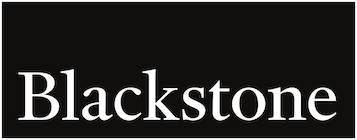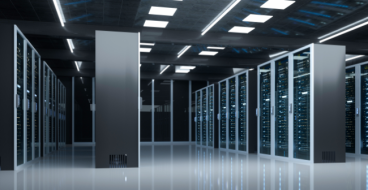Irony, Optimism, and AI
“I’ve seen the future, and it works” was one of the more memorable turns of phrase from renowned American journalist Lincoln Steffens. Unfortunately, it dates to 1919, when Steffens had just returned from Communist Russia. His assertion, though eloquently phrased, starkly contrasted with the harsh realities of a political and economic system where little worked as envisioned.
Today, as we explore the trends unfolding in artificial intelligence (AI), I find that Steffens’ words take on new meaning in that they blend irony and optimism. There’s little doubt that AI has the potential to drive productivity and growth through the economy in ways equal to or greater than the 1990s technology boom and other tech revolutions before that one. But an irony of new technology is that no matter how disruptive it is, traditional economic forces determine its trajectory and economic impact. In my view, understanding this dynamic is key to skillful asset allocation in the next cycle.
Optimistic About the Future with AI
“Is AI in a bubble?” That’s one of the questions we’re asked the most these days. No doubt, the AI fervor has propelled the Magnificent Seven to dizzying heights. It’s not just these tech giants, though. Companies across sectors have been quick to highlight AI in their strategic discussions. AI is now discussed at least once on every S&P 500 earnings call. Some companies have even overstated their AI capabilities, leading the Securities Exchange Commission (SEC) to caution against AI washing and urge transparency about actual AI utilization.
Figure 1: Aritifical Intelligence Mentions Per S&P Earnings Call
Source: Bloomberg, as of 12/31/2023.
We’re optimistic about the potential for AI-driven growth and productivity enhancements in the next business cycle and beyond. But it isn’t unusual for investors in public markets to get ahead of themselves with new technologies. There’s often a lag between market speculation and the tangible realization of the technological advancements. The biggest benefits to growth from the 90’s tech boom arrived well after their stock prices fell.
The bubble question has merit, but in my view the better question about AI right now is, “What does it mean for the real economy over the long term?” For example, and likely to the relief of many, technological advancements do not necessarily come at the cost of employment. Rather, new technologies often lead to the creation of jobs that previously didn’t exist. Approximately 85% of employment growth in the last 80 years can be attributed to new technologies.1 While the automobile industry rendered horse and buggy drivers obsolete and sent many a horse to the glue factory, it simultaneously generated new opportunities in manufacturing, sales, and repair services. Today, nearly 60% of workers are engaged in jobs that did not exist in 1940.2
AI’s an Additive to Economic Forces Already Firing
As disruptive as AI seems, the traditional dynamics underpinning productivity growth are already present in the economy, and they’re unrelated to AI. We know from the 1990s, the last significant period of productivity growth, that tight labor markets and fixed investment work hand in hand. In our inaugural Connection, we wrote about how we expect the US to enter a virtuous cycle where tight labor markets spur investment, which in turn increases productivity while expanding the economy and keeping inflation in check. These seeds were planted pre-COVID when the US started running out of cheap labor. In 2018, the unemployment rate fell below 4% from the post-Global Financial Crisis (GFC) high of nearly 10% while wage pressure rose to a 10-year high.3
Beginning in 2018, without a surplus of inexpensive labor, companies started investing for growth. Private fixed investment as a share of GDP recovered from post-GFC lows, and that initial wave is helping to drive productivity growth today. We see AI’s contribution to productivity further out on the horizon and being an additive factor to the traditional drivers present today.
Figure 2: US Productivity
(rolling 10-year average of annual percentage change)
Source: US Bureau of Economic Analysis and US Bureau of Labor Statistics, as of 12/31/2023. Tight labor markets defined as period when the rolling 10-year average of the prime age employment to population ratio is 78 or above.
Productivity can be hard to measure, especially when it’s associated with technology. It was the famous economist Robert Solow who said in 1987 that “You can see the computer age everywhere but in the productivity.” And when you consider that Candy Crush has been downloaded more times than Microsoft Office, we should view the data with some skepticism.4
But at the most basic level, productivity is a measure of efficiency of the inputs (capital, labor and technology) used to produce outputs (goods and services). After a wave of investment in the 90s, productivity boomed and pushed economic growth higher. Contrast that with the post-GFC environment when the economy was saddled with excess capacity and cheap labor and investment fell.
Figure 3: 10-Year Average Labor Productivity and Nominal GDP
(% year-over-year, seasonally adjusted)
Source: Bloomberg, US Bureau of Economic Analysis, as of 12/31/2023.Labor productivity represents non-farm business sector labor productivity. Post-tech bubble is from 3/31/2002 to 9/30/2007. Post-GFC is from 9/30/2009 to 9/30/2019.
The next innovation wave, the widespread adoption of AI, is still out on the horizon. To get there requires large amounts of capital and expertise. Take the demand for data centers as an example. Currently, 98% of data centers are under lease, and to build one takes 18–24 months on average. Utility connections take additional time, with an average wait time for permitting of more than 3 years. It’s also expensive; on average it can cost upwards of $500M to construct a single data center.5
Demand for AI-related expertise is also booming. Engineers skilled in large language models command a 44% premium in median annual compensation compared to non-AI skilled software engineers.6 As Global Head of Data Science Matt Katz discusses in the Guest Column, a recent survey of approximately 200 Blackstone portfolio company executives found that greater than 50% said their primary challenges were sourcing skilled talent and understanding AI’s potential benefits for their business.
Prep for a New Set of Drivers in the Next Cycle
In our view, successfully deploying AI technology can be fundamental to optimization, allowing companies to deleverage more and return capital to investors faster with the additional turns of margin improvement. We believe the scale and expertise that it takes to build a competitive advantage with AI reinforce the theme of alpha over beta with skilled managers.
The largest technology companies today are more profitable and have higher margins than prior tech booms, but we highlight that it may be established companies in mature industries that have the potential to benefit the most from AI at the application level. “Old economy” stocks have a profit margin of 10% compared to the Information Technology sector at 27%.7 If these old economy firms can increase margins from 10% to 12% by utilizing AI, that is a 20% improvement in profitability compared to already highly profitable tech companies.8
More broadly, the current economic conditions lay the foundation for a future cycle of positive growth. Productivity can provide an incremental boost to GDP with the same number of inputs leading to higher revenues for firms and higher real wages for employees. We illustrate an example of the possible value-add of productivity and its impact to future economic growth by comparing the long-term average and post-GFC productivity rates.
Figure 4: Projected US Nominal GDP Based on Productivity Growth Rates
Source: Blackstone Investment Strategy Calculations, US Bureau of Labor Statistics and US Bureau of Economic Analysis, as of 12/31/2023. Future nominal GDP (beginning in 2024) is comprised of 3 assumptions: (1) a constant labor force growth of 0.40% per annum using the long-term growth assumptions from the Federal Reserve9, constant inflation of 2.1% per annum using the spread between a long-term inflation assumption (2.5%), (2) the average spread between the GDP inflator and headline CPI from 1990-2023 (0.40%), and (3) either a post tech bubble average of productivity growth or post-GFC average of productivity growth. Post-tech bubble average is from 3/31/2002 to 9/30/2007. Post-GFC average is from 9/30/2009 to 9/30/2019.
A virtuous cycle with stronger economic growth is one more reason to believe that this next cycle will look a lot different than the last and compel advisors to adapt portfolios to a different set of performance drivers.
- The Labor Market Impacts of Technological Change: From Unbridled Enthusiasm to Qualified Optimism to Vast Uncertainty (David Autor, 2022).
- The Labor Market Impacts of Technological Change: From Unbridled Enthusiasm to Qualified Optimism to Vast Uncertainty (David Autor, 2022).
- U.S. Bureau of Labor Statistics. Wages and salaries data refers to year-over-year increase in Employment Cost Index.
- Google Play, Apple App Store. Cumulative downloads as of April 2024.
- CBRE, datacenterHawk, and Green Street. Vacancy rate data are annual as of 12/31/2023. Permitting wait times are as of December 12, 2023. Construction costs published April 2024 and represents data from both the US and Europe. Construction estimates are a combination of 50% colocation / 50% hyperscale.
- Levels.fyi. based on median total annual compensation.
- Bloomberg, Standard & Poor’s as of 12/31/2023. “Old economy” defined as financials, utilities, energy, industrials, materials, health care and consumer staples sectors.
- Bloomberg, Standard & Poor’s as of 12/31/2023. “Old economy” defined as financials, utilities, energy, industrials, materials, health care and consumer staples sectors.
- Federal Reserve, Labor Force and Macroeconomic Projections Overview and Highlights 2022-32.
The views expressed in this commentary are the personal views of the authors and do not necessarily reflect the views of Blackstone. The views expressed reflect the current views of the authors as of the date hereof, and neither the authors nor Blackstone undertake any responsibility to advise you of any changes in the views expressed herein.
Blackstone and others associated with it may have positions in and effect transactions in securities of companies mentioned or indirectly referenced in this commentary and may also perform or seek to perform services for those companies. Blackstone and others associated with it may also offer strategies to third parties for compensation within those asset classes mentioned or described in this commentary. Investment concepts mentioned in this commentary may be unsuitable for investors depending on their specific investment objectives and financial position.
Tax considerations, margin requirements, commissions and other transaction costs may significantly affect the economic consequences of any transaction concepts referenced in this commentary and should be reviewed carefully with one’s investment and tax advisors. All information in this commentary is believed to be reliable as of the date on which this commentary was issued, and has been obtained from public sources believed to be reliable. No representation or warranty, either express or implied, is provided in relation to the accuracy or completeness of the information contained herein.
This commentary does not constitute an offer to sell any securities or the solicitation of an offer to purchase any securities. This commentary discusses broad market, industry or sector trends, or other general economic, market or political conditions and has not been provided in a fiduciary capacity under ERISA and should not be construed as research, investment advice, or any investment recommendation. Past performance does not predict future returns.



